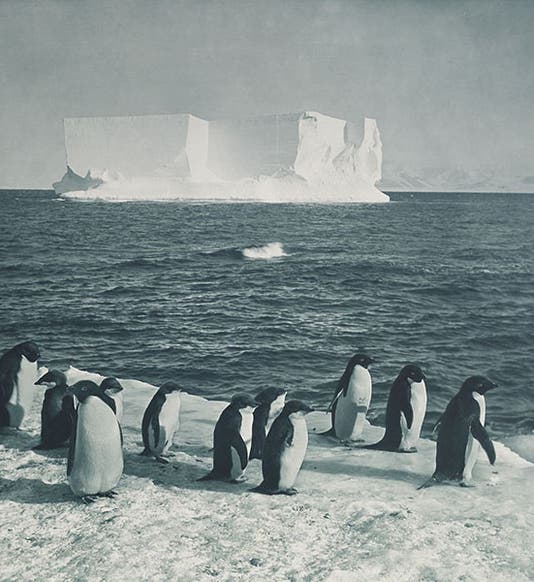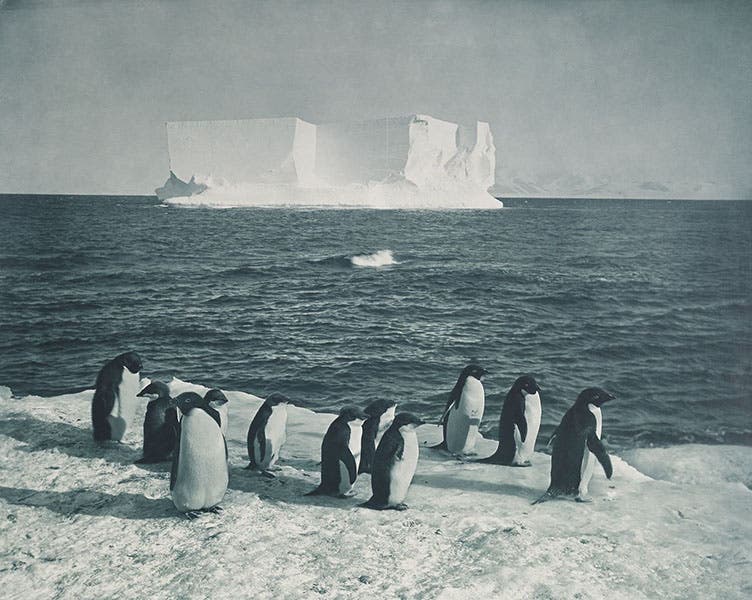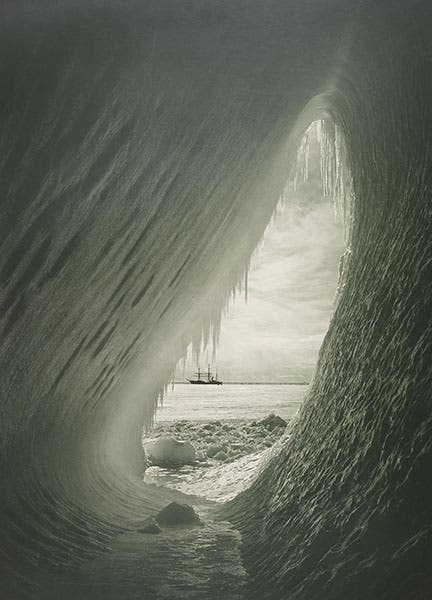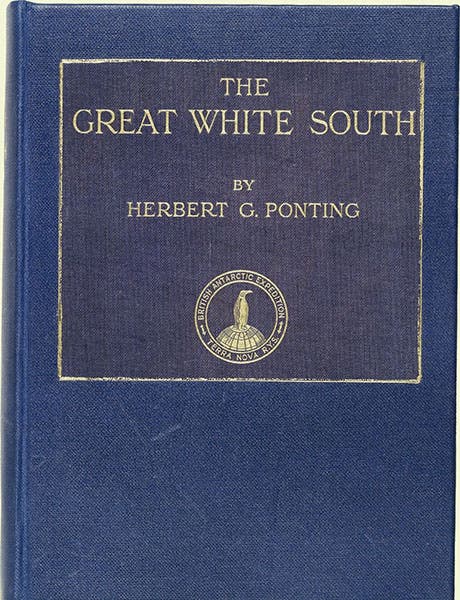Scientist of the Day - Herbert Ponting
Herbert George Ponting, a British photographer and explorer, was born Mar. 21, 1870. Every polar expedition had a photographer, but not many are known by name, the most notable exception being Frank Hurley, who took the memorable photographs of the Endurance and its crew on Ernest Shackleton’s trans-Antarctic expedition of 1914-16. Ponting was official photographer on the Antarctic expedition that preceded Shackleton’s, Robert Scott's Terra Nova expedition of 1910-13. This was the attempt to reach the South Pole that ended in tragedy, as Scott and his team of four reached the Pole and found evidence that Roald Amundsen had beaten them to it, and then perished on the trek back to base. Ponting did not take the famous picture of Scott and his men standing dejectedly at the Pole, since he did not make the trip, but he took nearly all the other photographs that provide us with such a complete record of the Terra Nova expedition.
If the Terra Nova expedition had been successful, Ponting would have greatly improved his financial situation by selling prints and providing images for the inevitable public lecture tour. The death of Scott put the kibosh on those plans, and the outbreak of World War I dampened things further. So Ponting in his lifetime never acquired the reputation as a polar photographer that he really had earned. He published a book of his photographs, The Great White South, in 1921, but that brought only modest returns, and he died relatively unknown and unrewarded in 1935.
However, 70 years later, the Scott Polar Research Institute paid over half-a-million pounds for 1700 of Ponting’s glass plate negatives, where they are now available for researchers. Here is the webpage that introduces their catalog of the Terra Nova photographs. Much earlier, in 1914, a selection of Ponting’s Antarctic prints had been presented to King George V, and these are more readily available to download, so I have drawn our Pointer photographs of Antarctica from the Royal Collection. We show: a tabular iceberg with penguins (first image); a view of the Terra Nova ship through a grotto in the ice (third image); and a birthday dinner for Scott, on June 6, 1911, which turned out to be his last (fourth image). Scott is at the far end of the table, well away from those English peas.
If you heard Edward Larson’s lecture at the Library last month on the Scott expedition, you might recall that he talked about the journey made by three of Scott’s men during the Antarctic winter (June-July, 1911) to an Emperor penguin rookery at Cape Crozier, to retrieve some penguin eggs for further study (a video of Larson’s lecture is available here). Called “the worst journey in the world” by Apsley Cherry-Garrard, one of the participants, it was not documented by Pointer, who was too smart to go along. But he did take a photograph of the three men starting out in June, and another of them after their return. We show the setting-out photo here (fifth image). The photo of the exhausted trio on their return can be seen at our post on Cherry-Garrard. We also wrote a post on Bill Wilson, the ornithologist on the “worst journey,” which leads off with a photo of Wilson by Ponting.
We do not have a copy of Ponting’s Great White South in our library. It is probably outside our acquisition guidelines, although I am sure they could be bent slightly to accommodate it. So we show the cover of the copy in the Royal Collection at Windsor Castle (sixth image). The frontispiece of the book is the self-portrait of Ponting that we included as our second image.
William B. Ashworth, Jr., Consultant for the History of Science, Linda Hall Library and Associate Professor emeritus, Department of History, University of Missouri-Kansas City. Comments or corrections are welcome; please direct to ashworthw@umkc.edu.












